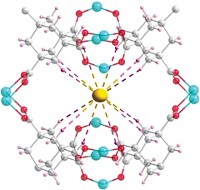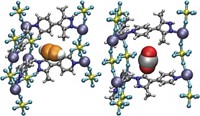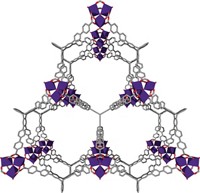Advertisement
Grab your lab coat. Let's get started
Welcome!
Welcome!
Create an account below to get 6 C&EN articles per month, receive newsletters and more - all free.
It seems this is your first time logging in online. Please enter the following information to continue.
As an ACS member you automatically get access to this site. All we need is few more details to create your reading experience.
Not you? Sign in with a different account.
Not you? Sign in with a different account.
ERROR 1
ERROR 1
ERROR 2
ERROR 2
ERROR 2
ERROR 2
ERROR 2
Password and Confirm password must match.
If you have an ACS member number, please enter it here so we can link this account to your membership. (optional)
ERROR 2
ACS values your privacy. By submitting your information, you are gaining access to C&EN and subscribing to our weekly newsletter. We use the information you provide to make your reading experience better, and we will never sell your data to third party members.
Metal-Organic Frameworks
MOF with dual-functionalized pores packs ammonia especially tightly
Material may lead to new ammonia sorbents for transportation and personal protection
by Mitch Jacoby
May 7, 2021
| A version of this story appeared in
Volume 99, Issue 17

A metal-organic framework (MOF) compound can soak up large quantities of ammonia, packing the gas especially tightly in the pores of the new aluminum-based crystalline material (J. Am. Chem. Soc. 2021, DOI: 10.1021/jacs.1c01749). The finding may lead to new types of sorbents for storing large quantities of ammonia in a small volume, a key requirement for using the gas as a source of hydrogen fuel for transportation. The study may also result in advances in trapping trace quantities of the toxic gas, as needed for personal protection. Researchers have previously evaluated zeolites, silica, MOFs, and other materials for storing and capturing ammonia. Many of these materials were considered impractical because of their low storage capacity, irreversible uptake, or chemical instability after multiple adsorption-desorption cycles. A team led by Christopher Marsh, Sihai Yang, and Martin Schröder of the University of Manchester now reports that its new MOF, MFM-303(Al), reversibly stores ammonia with an exceptional room-temperature packing density (a measure of storage capacity by volume) of roughly 0.80 g/cm3. That value is only slightly lower than the density of solid ammonia—approximately 0.81 g/cm3. Analyses show that the gas packs efficiently because of the presence of OH and COOH binding sites, which line the pores of the new MOF.





Join the conversation
Contact the reporter
Submit a Letter to the Editor for publication
Engage with us on Twitter